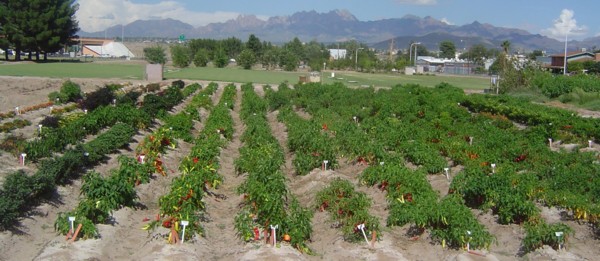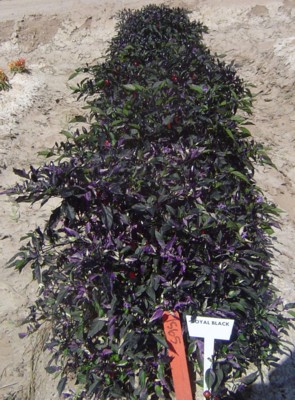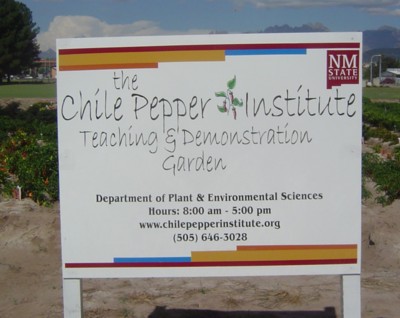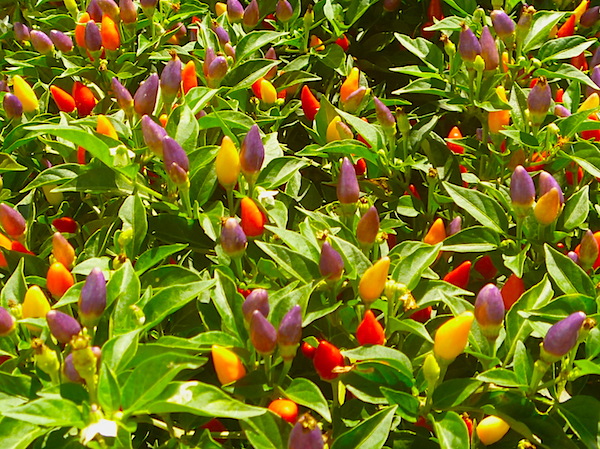Article and Photos by Dave DeWitt
Fiery Foods & BBQ Central Recommendations
Chile Pepper Bedding Plants… over 500 varieties from Cross Country Nurseries, shipping April to early June. Fresh pods ship September and early October. Go here
Chile Pepper Seeds… from all over the world from the Chile Pepper Institute. Go here

The Garden Ready for Picking with the Organ Mountains in the Background
Every year, the Chile Pepper Institute at New Mexico State University plants a diverse garden of chile pepper varieties from all over the world. The approximately one-half acre plot has about 160 varieties of all five domesticated species, and there is a theme to each garden. Past themes have included “World’s Hottest” and “Hungarian Peppers Everywhere.”

The Theme of the 2006 Garden was “Passion for Purple”
“The purpose of the garden is educational,” says Danise Coon, assistant director of the Institute. “We want to teach everyone about the incredible diversity of chile peppers.” During the summer, the garden is toured by about 25 school groups, 4-H groups and Future Farmers of America groups, plus NMSU students, elder hostel groups, and about 100 chilehead tourists.
The garden is maintained by Work Studies students under the direction of Danise and Dr. Paul Bosland, director of the Institute. It adjoins the greenhouse where Dr. Bosland conducts his breeding program and experiments with chiles. Most varieties do very well, Danise told me, except for the pubescens species (rocotos) and she mentioned that “It’s a little too hot and dry for many of the bell varieties.”
The 2006 season saw record rainfall in Las Cruces, which caused flooding in the garden, Dr. Bosland told me, and he had to bring in a backhoe to dig holes beside the garden to drain off all the water. But the plan worked and the garden was saved from the water-borne phytophthora fungus that causes root rot.
And what happens to all the pods that are grown? “Several educational groups and teachers ask for examples of the pods for classes,” Danise told me, “and any time we do a talk at the garden we pick pods for a ‘show and tell’. At the end of the season, just before the expected first frost, we invite, students, staff, and faculty to pick whatever they want.”






